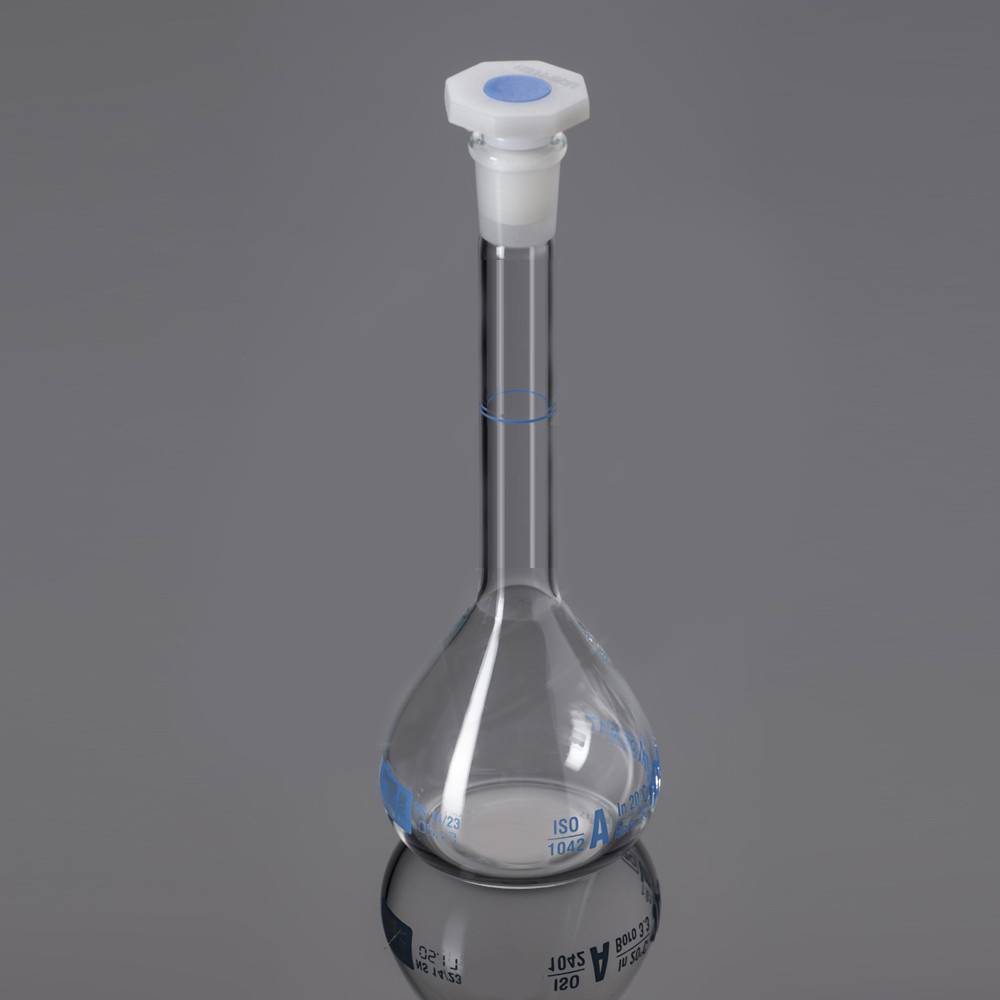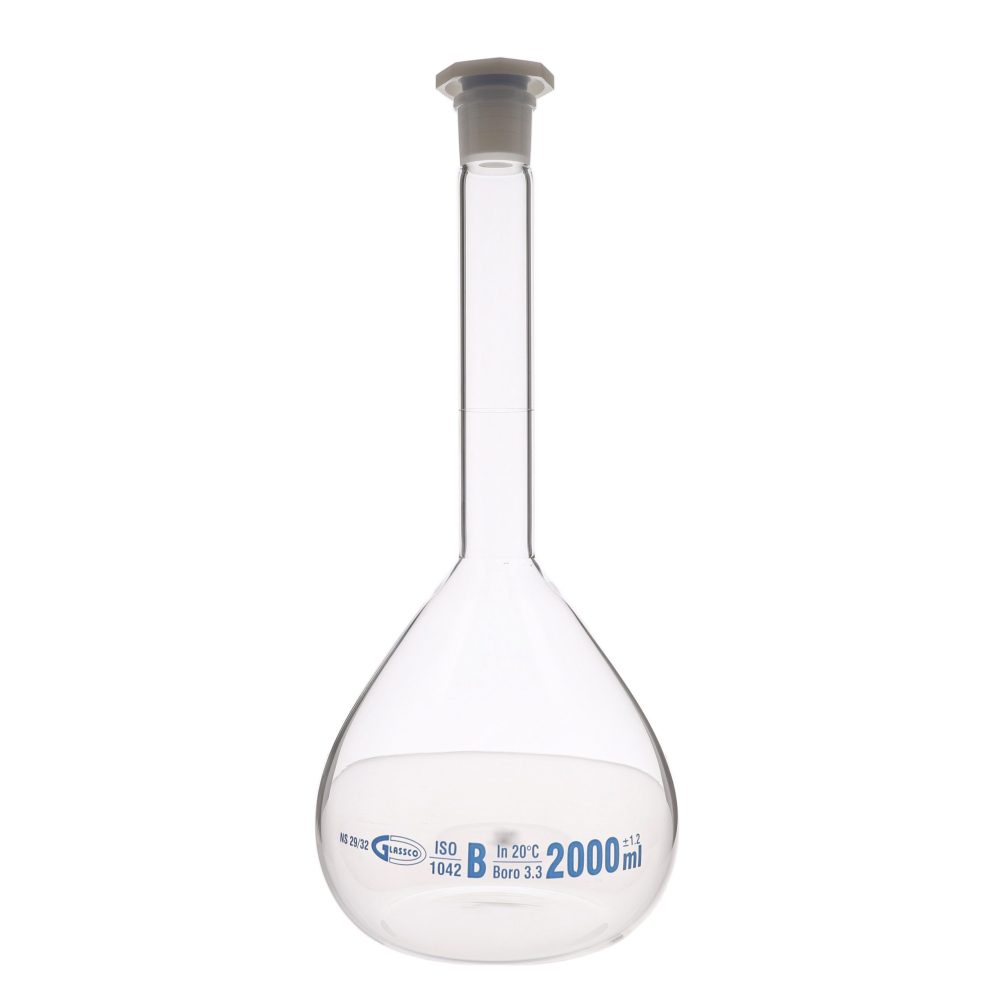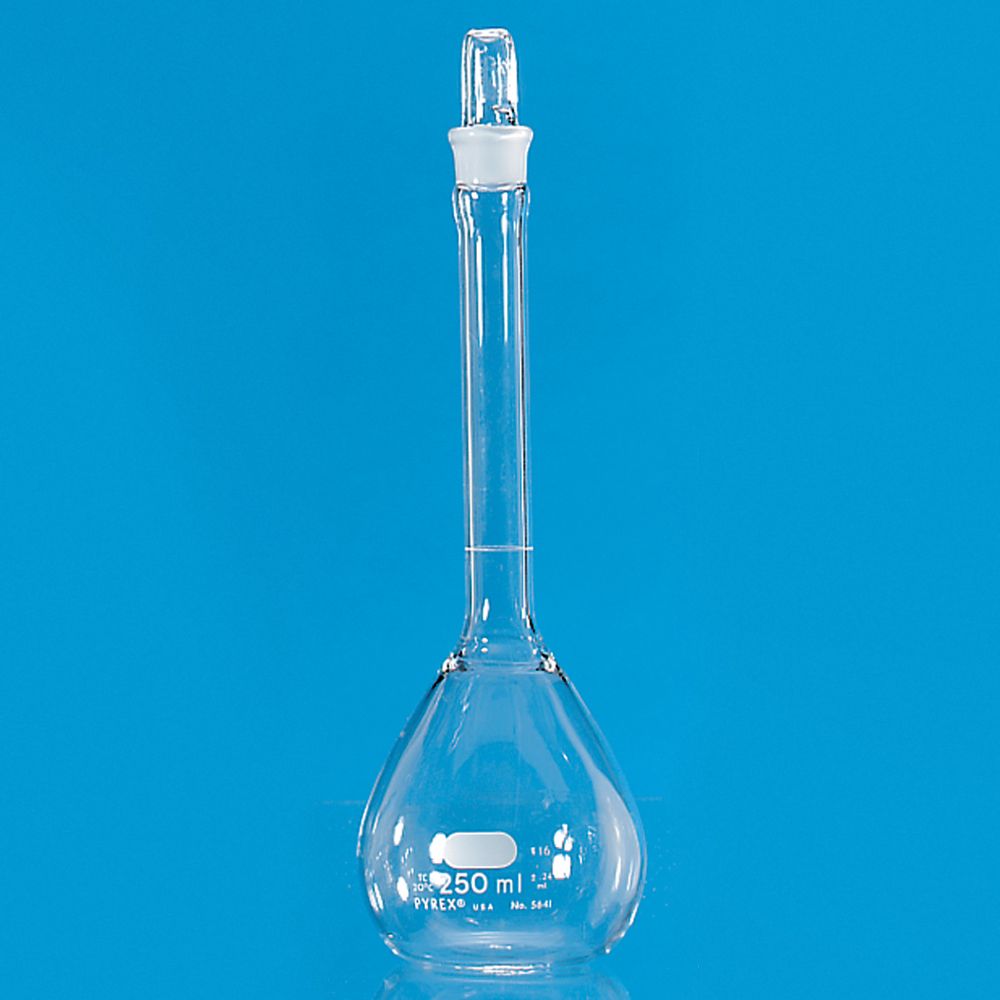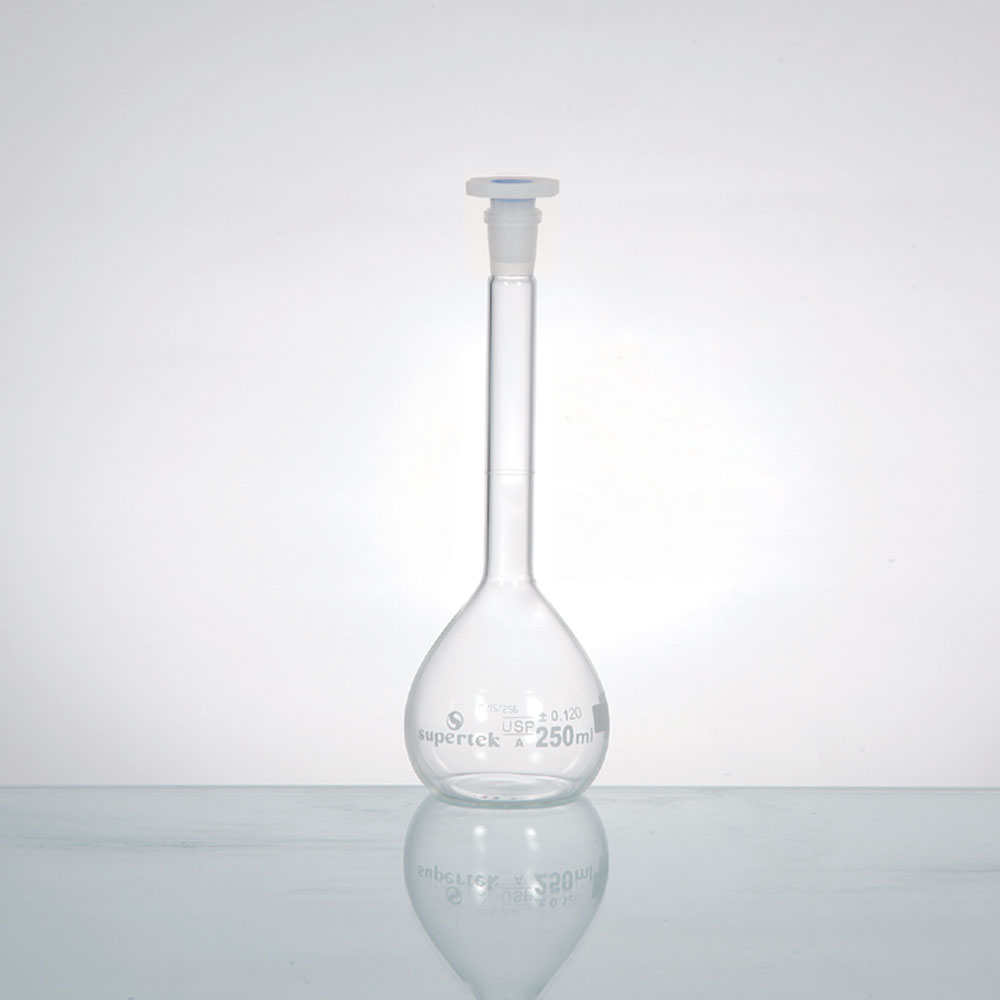Introduction to Volumetric Flasks
What is a volumetric flask used for?Volumetric flasks are essential tools in any laboratory. They are specifically designed for precise liquid measurements. A volumetric flask has a bulbous body and a long neck. This unique design aids in accurate volumetric analysis. The flasks ensure that exact volumes of liquid are measured, critical for various lab processes. Their structure includes a calibration mark. This mark indicates a specific volume. The long neck assists in easy pouring and mixing of liquids without spillage. These features make volumetric flasks indispensable in laboratory settings. In science, accuracy is crucial. Volumetric flasks help achieve this by providing reliability in experiments. Therefore, understanding what a volumetric flask is, and how to use it, is fundamental for lab work.

Key Features of Volumetric Flasks
Volumetric flasks are designed to offer unparalleled precision in liquid measurement. Key to their functionality is their unique shape and calibration markings. They typically feature a bulbous bottom which enables easy swirling and mixing of solutions. The flasks’ long necks are beneficial not just for pouring liquids but also for avoiding spillage. Additionally, the marked line around the neck of the flask signifies the exact volume it holds, ensuring precise measurements. This calibration mark is critical, as it allows for accuracy when preparing solutions in a lab setting. Most volumetric flasks are made from glass or plastic, with glass being more common in professional labs due to its chemical resistance and clarity.
Furthermore, volumetric flasks are available with different markings for various applications. Some have a single mark for one specific volume while others feature multiple marks. This flexibility makes them highly versatile and suitable for a wide range of scientific tasks. The material of the flask also plays a crucial role. Glass flasks, for instance, are ideal for solutions that are sensitive to contamination by plastics or other materials. They are also transparent, making it easier to read the volume markings accurately. Plastic flasks, though less common, provide durability and resistance to breakage, making them suitable for less critical applications or educational purposes.
Different Types of Volumetric Flasks
The diverse range of volumetric flasks caters to various lab tasks. It’s important to pick the right type for an experiment. Next, we’ll talk about different types of flasks.
Class A Flasks
These flasks ensure high precision, ideal for advanced analytical work. They often come with a certificate confirming their accuracy.
Class B Flasks
These provide good accuracy for general use. They are common in educational settings where extreme precision isn’t critical.
Single-Mark Flasks
These have one calibration line. They are perfect for measurements that need just one specific volume.
Double-Mark Flasks
Double-mark flasks carry two calibration lines. They’re handy for titrations that require more than one volume.
Color-Coded Flasks
Colored flasks shield sensitive solutions from light damage. They help in identifying different reagents quickly.
Each type comes with its own set of advantages. You must consider the accuracy, application, and material needs of your experiment before choosing a flask. This way, you ensure reliable results every time.

Versatile Applications in Laboratory Settings
Volumetric flasks hold a special place in laboratory work. They are not limited to any single type of procedure. Their use spans across many applications, from routine testing to complex research. Below are some common ways volumetric flasks prove invaluable in lab settings.
- Mixing Solutions: By allowing for accurate volume measurements, volumetric flasks ensure consistent results in solution preparation. This precision is especially important in chemistry, where reaction outcomes depend heavily on solution concentration.
- Titrations: When performing titrations, accurate measurements are vital. Volumetric flasks provide dependable volume marking. This makes them perfect for preparing titrant solutions needed in these analyses.
- Calibration Standards: Often in labs, instruments require calibration with solutions of known concentration. Volumetric flasks allow for the preparation of these standards with high precision.
- Dilutions: Researchers use volumetric flasks to dilute stock solutions. They help in achieving desired concentrations without compromising on precision.
- Education and Training: Students learning lab procedures benefit greatly from using volumetric flasks. They offer a hands-on experience with material measurement and handling. This experience is crucial in educational labs.
- Quality Control Tests: In pharmaceutical and industrial labs, volumetric flasks help maintain product consistency. They are basic tools for performing accurate quality control tests.
In all these applications, the correct use of a volumetric flask is key. It ensures accuracy in experiments and trust in outcomes. Whether it’s mixing, measuring, or maintaining solutions, volumetric flasks stand out for their versatility in laboratory environments.
Volumetric Flask Advantages in Precise Measurements
The volumetric flask is a fundamental tool in laboratories. Its main advantage is the high precision it offers in liquid measurements. Here’s how it helps with exactness in lab work:
- Specific Volume Calibration: The flask’s calibration mark signifies an exact volume. This allows for precision in preparing solutions.
- Minimal Error Risk: With exact calibration, there is less chance of errors in measurements. This means outcomes are reliable.
- Ease of Use: Its shape ensures easy pouring without spills. This saves time and avoids waste of reagents.
- Uniformity: Whether mixing, diluting, or storing, the flask’s design provides consistent results every time.
- Versatility: Its marks cater to single or multiple volume needs. This flexibility is helpful across various lab tasks.
- Chemical Resistance: Made from glass or plastic, flasks withstand harsh chemicals. They remain accurate over many uses.
These flasks are vital for tasks needing precise liquid volumes. They ensure accuracy whether you’re mixing solutions or running quality controls. In short, their role in precise measurements is crucial in lab success.
Handling and Maintenance of Volumetric Flasks
Proper handling and maintenance are key to the longevity and accuracy of volumetric flasks. These steps help preserve their precision:
- Cleaning: Always clean flasks before and after use. Use mild detergent and rinse with distilled water to remove any impurities that could affect measurements.
- Rinsing: Rinse the inside with the solvent you’ll use in your experiment. This prevents contamination and ensures consistent results.
- Inspection: Check flasks for cracks or chips regularly. Damaged flasks can lead to inaccurate measurements and unsafe conditions.
- Storing: Keep flasks upright in a safe, dry place. Store them with their stoppers to prevent dust build-up.
- Drying: After washing, flasks should be air-dried completely before use. Residual water can alter solution concentrations.
- Handling: Handle with care; use both hands for stability. Avoid exposing to extreme temperatures to reduce the risk of breakage.
Adhering to these guidelines will extend the life of your volumetric flasks and ensure the accuracy of your experiments. Always perform maintenance with precision to achieve the best results in your scientific work.

Common Challenges and Solutions
While volumetric flasks offer precision, users can face challenges. Here are common issues and solutions:
- Measurement Errors: Even slight miscalculations can impact results. Always double-check the calibration mark and ensure the meniscus sits exactly at the line for accuracy.
- Glassware Breakage: Glass flasks can break if mishandled. Handle them gently and store securely. Consider plastic alternatives for less risky environments.
- Contamination: Contaminants affect measurement accuracy. Clean flasks thoroughly before use. Rinse with the solvent that will be used in experiments.
- Thermal Expansion: Temperature changes can affect glassware volume. Allow flasks and liquids to reach room temperature before measuring.
- Difficulties with High Viscosity Liquids: Thicker liquids may cling to flask sides. Use appropriate techniques, like rotating the flask, to ensure complete mixing.
- Reading Errors: Misreading the meniscus leads to inaccuracies. Read the volume at eye level and in good lighting to minimize errors.
- Evaporation: Solvents can evaporate while measuring. Work quickly and cap flasks when not in use to prevent evaporation losses.
By addressing these challenges with the given solutions, volumetric flasks can be used with confidence for precise measurements in the lab.
Conclusion: The Essential Role of Volumetric Flasks in Labs
Volumetric flasks are crucial laboratory tools. They ensure precision in volume measurements. Their unique design features, such as a bulbous body and a narrow neck, aid in the precise preparation of solutions. By providing exact volume calibration, these flasks reduce errors in measurements. They stand up to repeated use due to their chemical resistance, whether made from glass or plastic.
Their mark line around the neck signifies exact volume, promoting accuracy. This is vital for applications like titrations, solution preparations, and quality control tests. Moreover, volumetric flasks help maintain consistency in research outcomes and industrial product standards.
In educational settings, they are invaluable for teaching accurate measurement techniques. The use of these flasks spans across chemistry, biology, and pharmaceutical labs. Their reliability and versatility make them indispensable tools in any modern laboratory.
Always handle volumetric flasks carefully to maximize their lifespan and maintain their precision. Proper maintenance, like regular cleaning and correct storage, is essential. By taking these precautions, labs can rely on volumetric flasks for accurate and successful experiments.
In summary, the rigorous application of volumetric flasks in labs highlights their irreplaceable status in achieving scientific and experimental precision.





